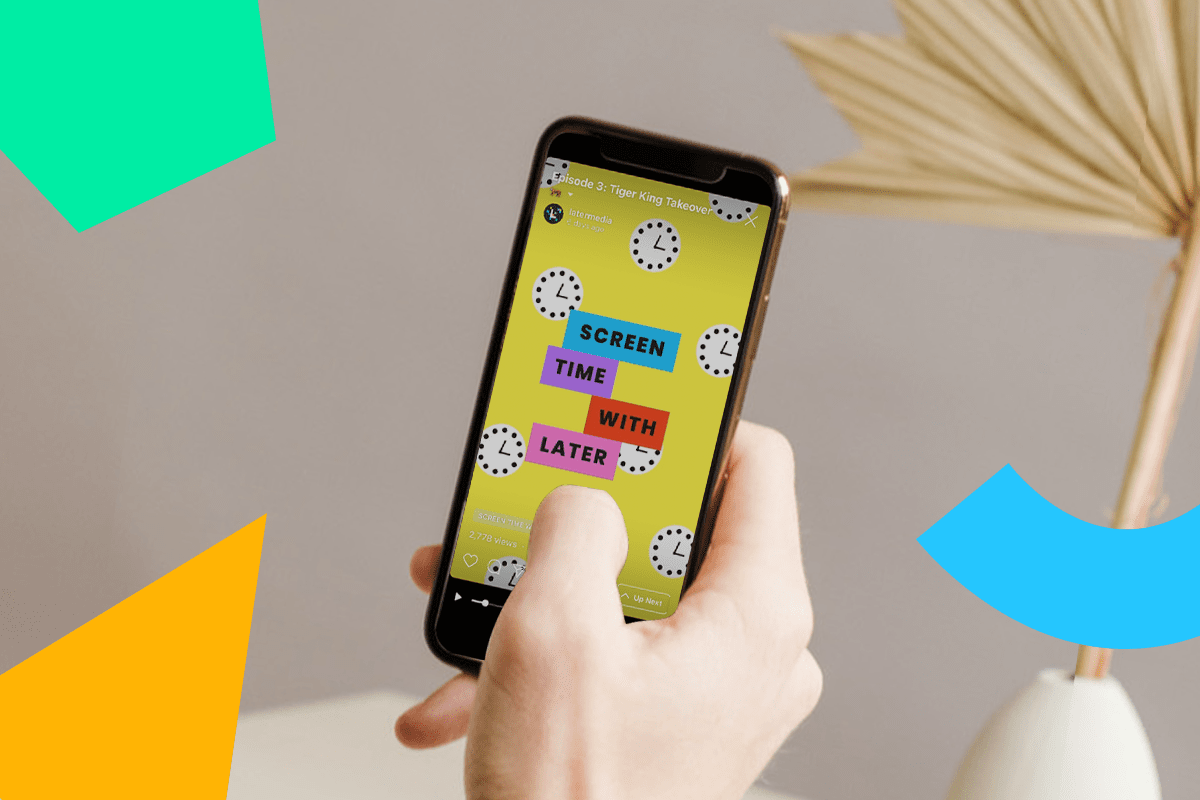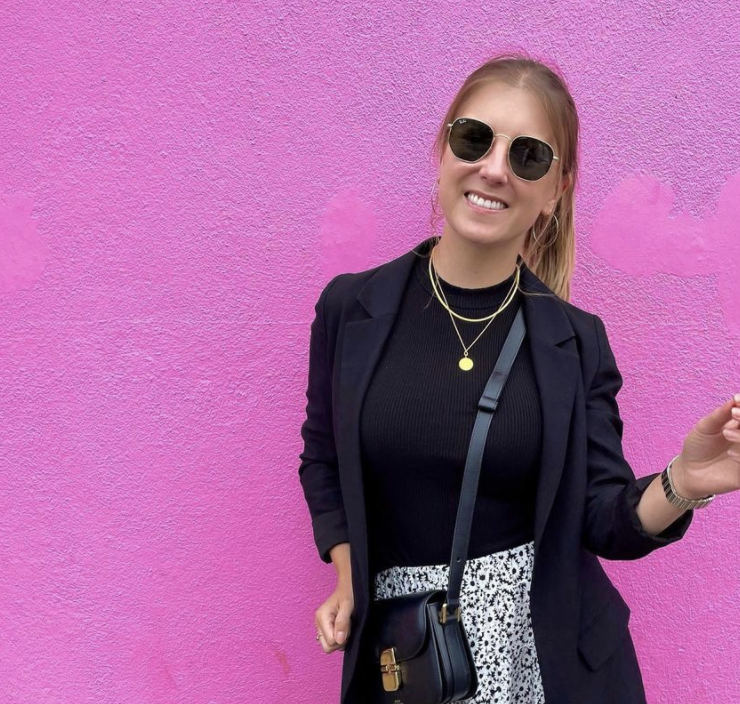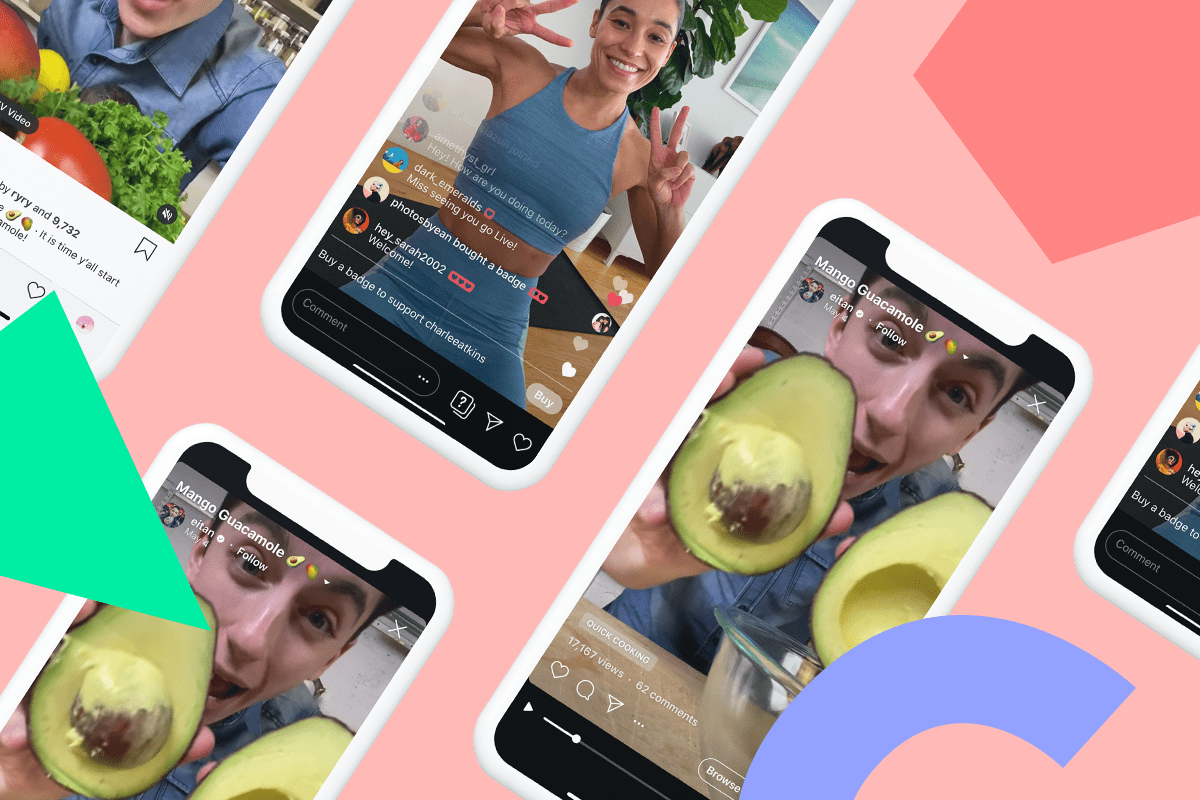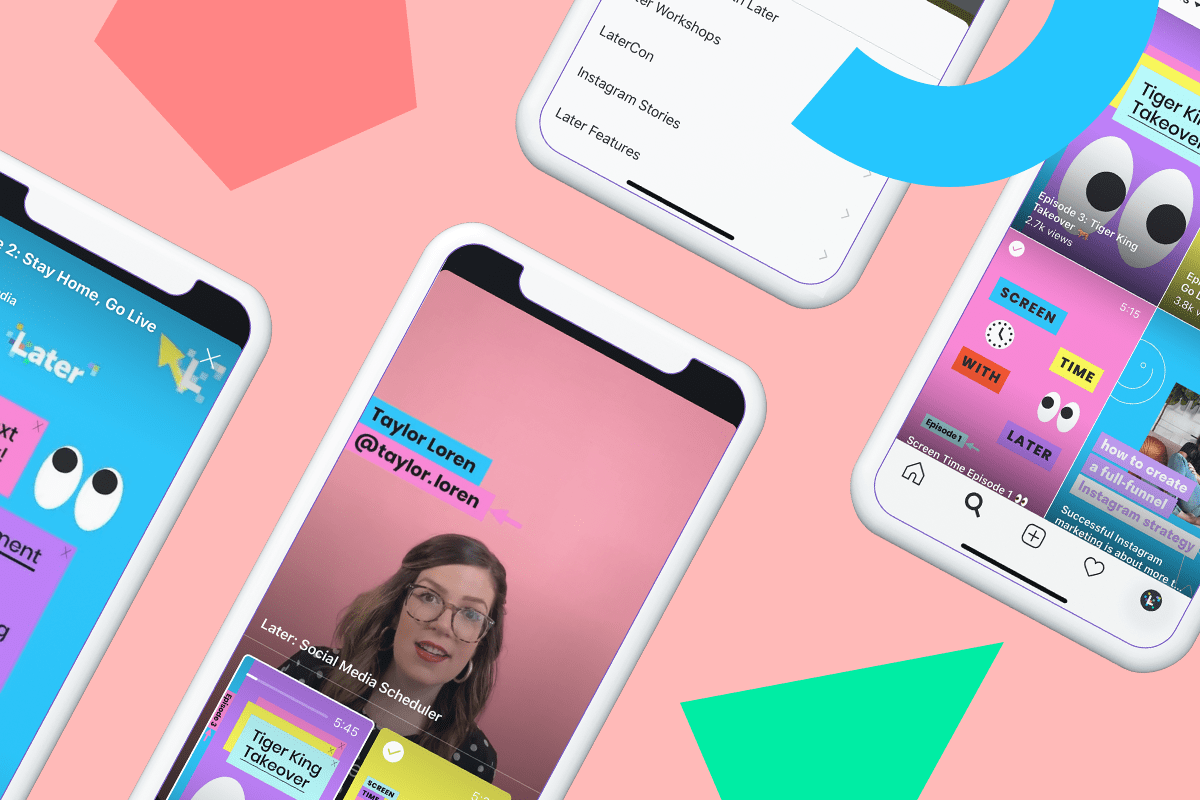IGTV is the home of longer-form video content on Instagram.
It’s an incredible channel to showcase products, styling tips, and step-by-step tutorials — the kind of content that really resonates with audiences and can help build long-term relationships.
In this Ultimate Guide, we’re sharing everything you need to know about IGTV, from setting up your channel and creating binge-worthy series to analyzing your performance:
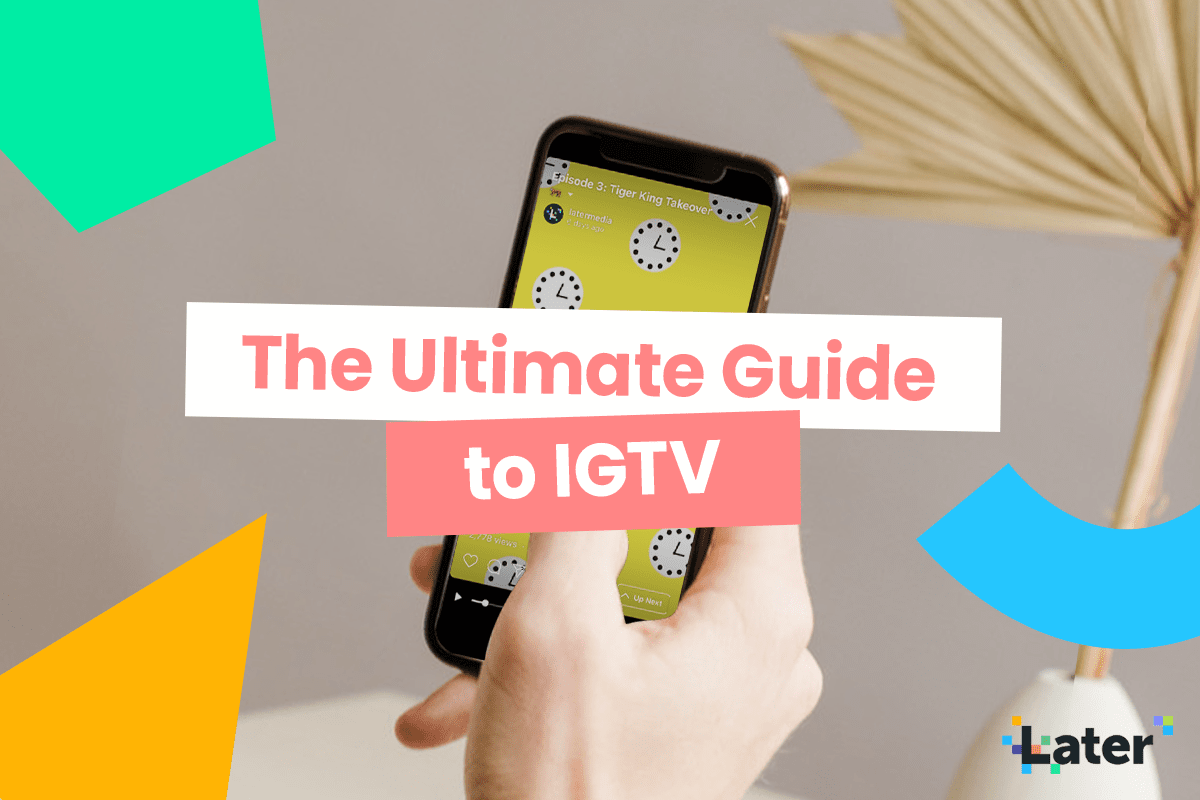
Table of Contents:
What is IGTV?
IGTV is Instagram’s answer to YouTube — a mobile-optimized platform for viewing video content that’s up to 60 minutes long.
Originally, IGTV only supported vertical (9:16) video. However, the platform has since evolved to support horizontal (16:9) video formats — opening up new opportunities for creators already sharing videos on YouTube.
When publishing a new video, users can share a 15 second preview to their Instagram feed. This is one of the most effective way to gain exposure on your IGTV video and boost video views.
Plus, once you’ve shared a video, a new tab will be available on your Instagram profile — where visitors can discover all your IGTV series and videos in one place.

IGTV also has its own dedicated tab in the Instagram Explore page — making it a big opportunity to increase your reach and attract new audiences.
Here, IGTV videos are curated by the Instagram algorithm based on a user’s historical interactions and engagements. Essentially, the algorithm serves videos based on what it *thinks* a viewer is most likely to enjoy.
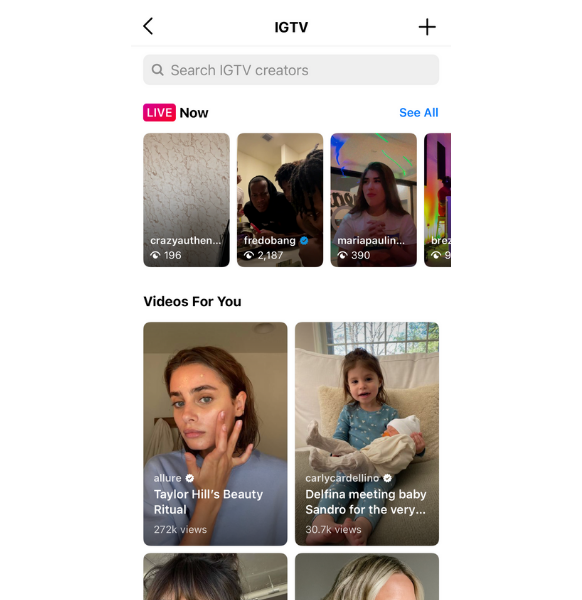
IGTV has also recently released new features to help businesses and creators to make money on the platform.
IGTV Shopping allows businesses to tag products directly within their video content, so viewers can seamlessly tap to shop while consuming video content.
For creators, IGTV Ads are another way to earn on Instagram. In an interview with The Verge, Instagram’s COO, Justin Osofsky said that creators with IGTV Ads enabled receive an “industry standard” 55% share of all advertising in IGTV, the same rate as YouTube.
Ready to learn more about IGTV for brands and creators? Jon Youshaei, Instagram Product Marketing Manager shares his best tips on how to create a successful strategy in this video:
How to Share a Video on IGTV
IGTV videos need to be created outside of Instagram and then uploaded to the platform.
To share your first IGTV, follow this step-by-step guide:
Step #1: Open the Instagram app, head to your profile page, and select the “plus” icon.
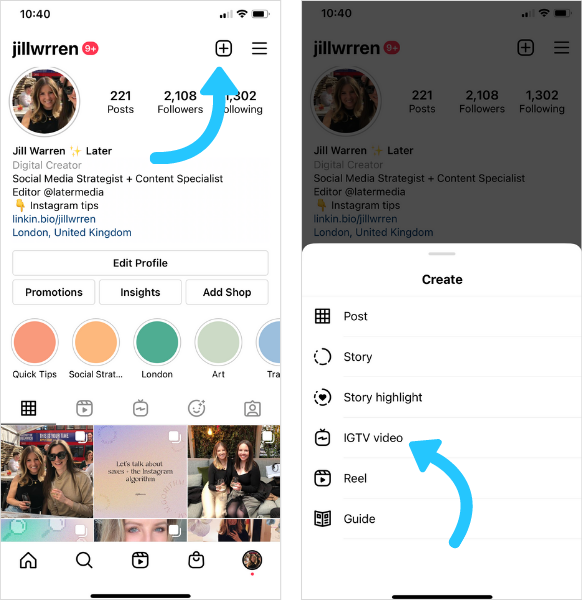
Step #2: Select a video from your camera roll. You can only select videos that are over 60 seconds in length. For most accounts, the maximum length is 15 minutes, but some will be able to share videos up to 60 minutes in length.
Step #3: Once you’ve selected a video, set a cover image by choosing a frame from the video or selecting an image from your camera roll.
Step #4: Add a title and description for your video.
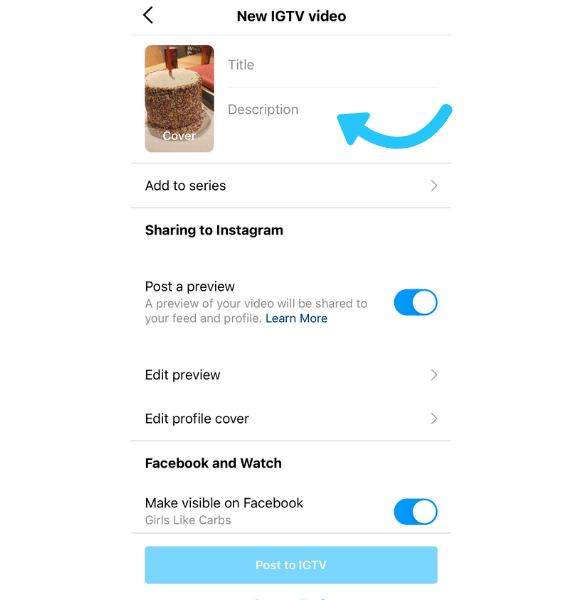
Note: For viewers, the video description is accessible by tapping a small arrow next to the video title — and it can contain clickable links. For brands, this can be a great way to drive traffic to your site. For creators, this is an opportunity for sharing clickable affiliate links.
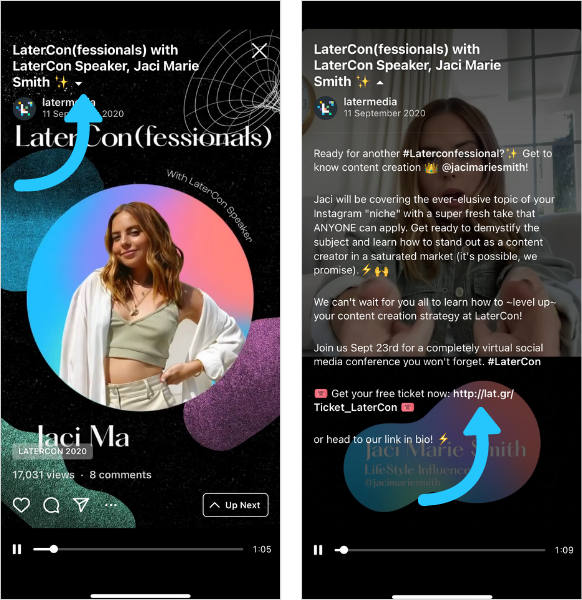
Step #5: Add your IGTV video to a series (optional) and decide whether to post a 15 second preview to your feed by toggling the button on or off.
Step #6: Tap “Edit preview” to adjust what section of your 9:16 video is displayed in the 4:5 feed preview.
Step #7: Edit how your IGTV’s cover image displays in your Instagram grid by selecting “Edit profile cover.”
Step #8: Add automated captions to your IGTV video by selecting “Advanced settings” and toggle the “Auto-generated captions” button on.
Step #9: Select “Post to IGTV” or “Save as Draft” to publish later!
When you post your first video, you’ll notice a new section on your Instagram profile — a tab dedicated to your IGTV videos.
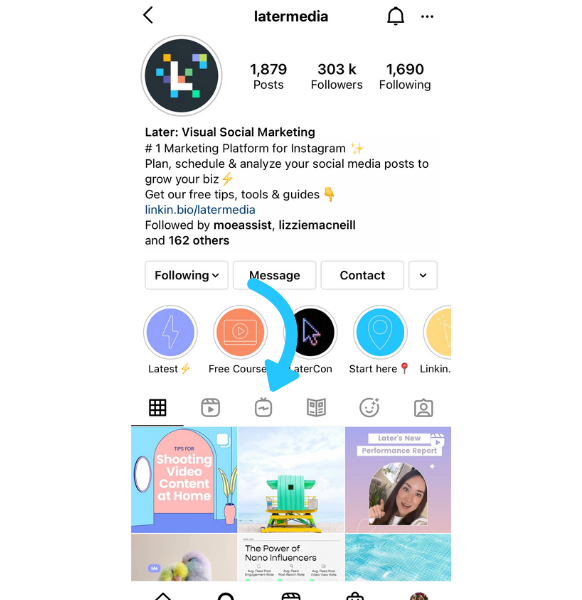
How to Create Videos for IGTV:
Unlike Instagram Reels, IGTV videos are created outside of the Instagram app and uploaded.
For the best results, follow these technical specifications:
Video format: MP4
Length: Videos must be at least one minute long. The maximum length your video can be is 15 minutes when uploading from a mobile device and 60 minutes when uploading from the web
Size: 650MB for videos less than 10 minutes; 3.6GB for videos up to 60 minutes
Orientation: vertical (portrait) or horizontal (landscape)
Aspect ratio: Instagram recommends that vertical IGTV videos should have an aspect ratio of 9:16, while horizontal videos should be 16:9
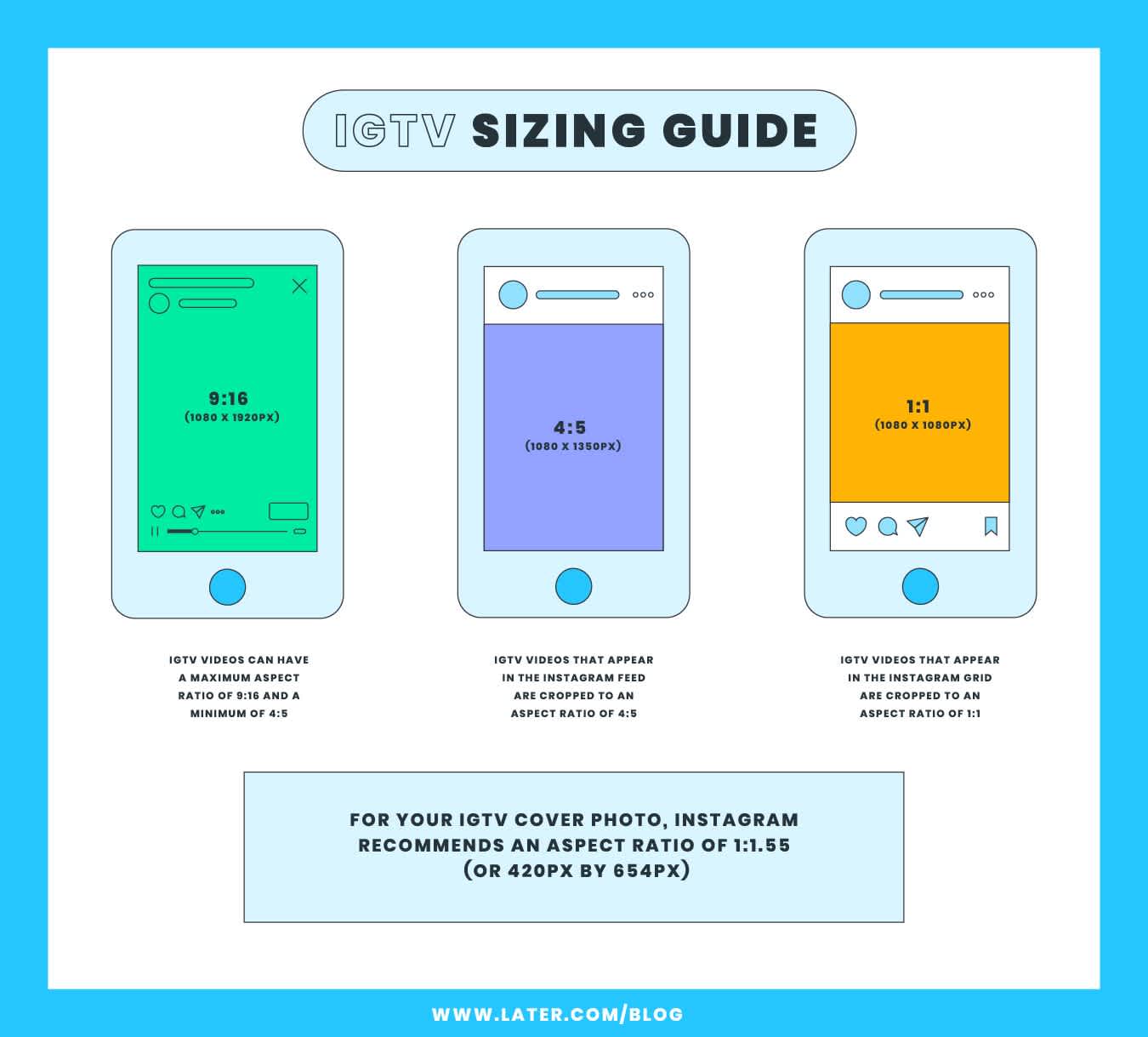
When creating your IGTV videos, consider that feed previews are always the first 15 seconds of your video.
Make sure your intro has a strong hook to capture your viewers attention and reel them in, and optimize your footage for the 4:5 in-feed video display.
How to Share a Preview of Your IGTV Video on Your Instagram Feed
Instagram gives users the option to share a 15 second preview of your video to your Instagram feed.
If you select to do this, your IGTV videos will live in the grid on your Instagram profile, with a little IGTV icon in the right-hand corner.
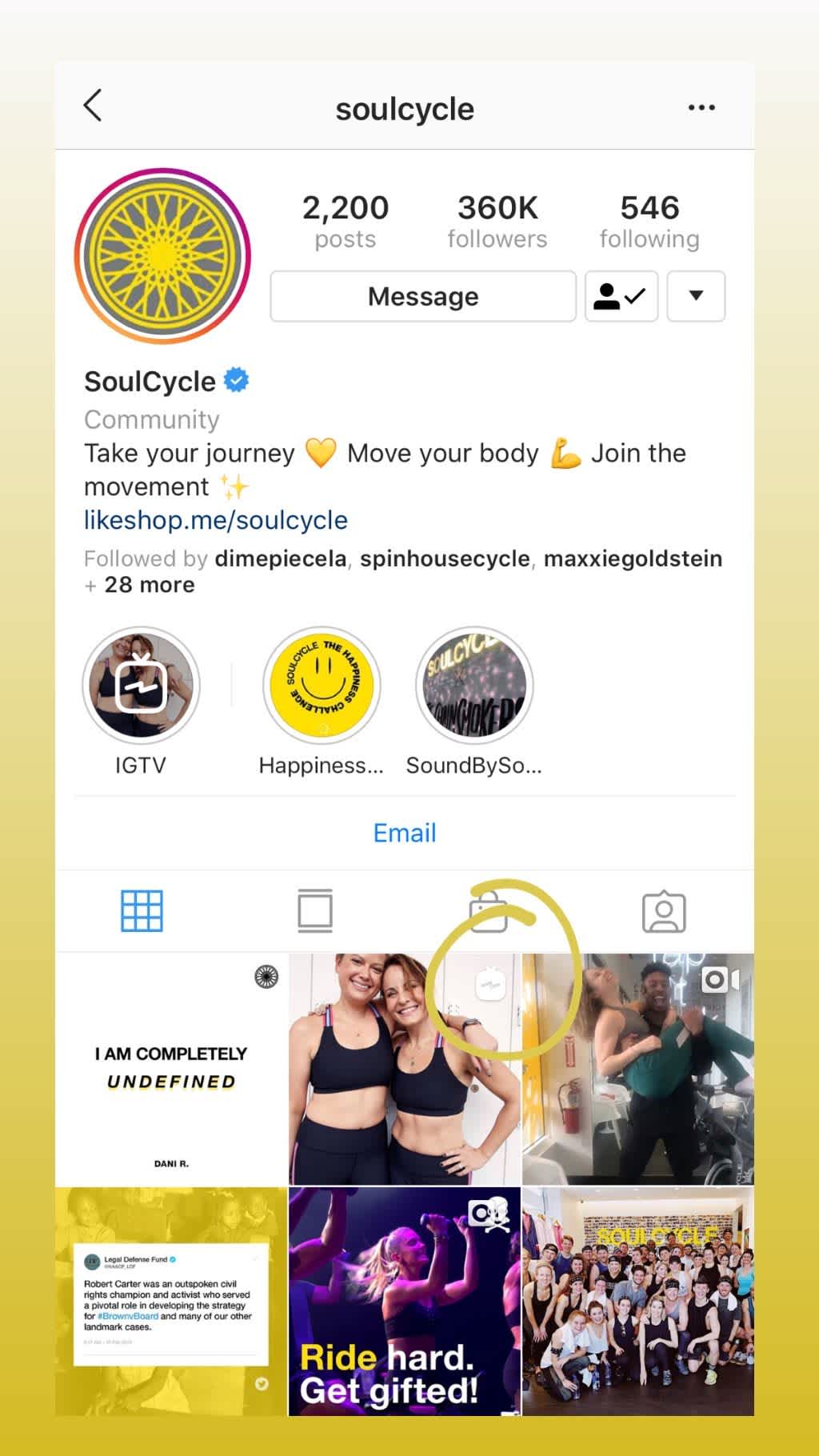
You don’t have to share IGTV videos to the Instagram feed, it’s totally optional — but it will help you get more views on your content.
All you need to do is toggle the “Post a preview” button on. Once you’ve selected that option, a preview of your IGTV video will appear in your followers’ feeds, and the cover image will appear in your Instagram profile grid.
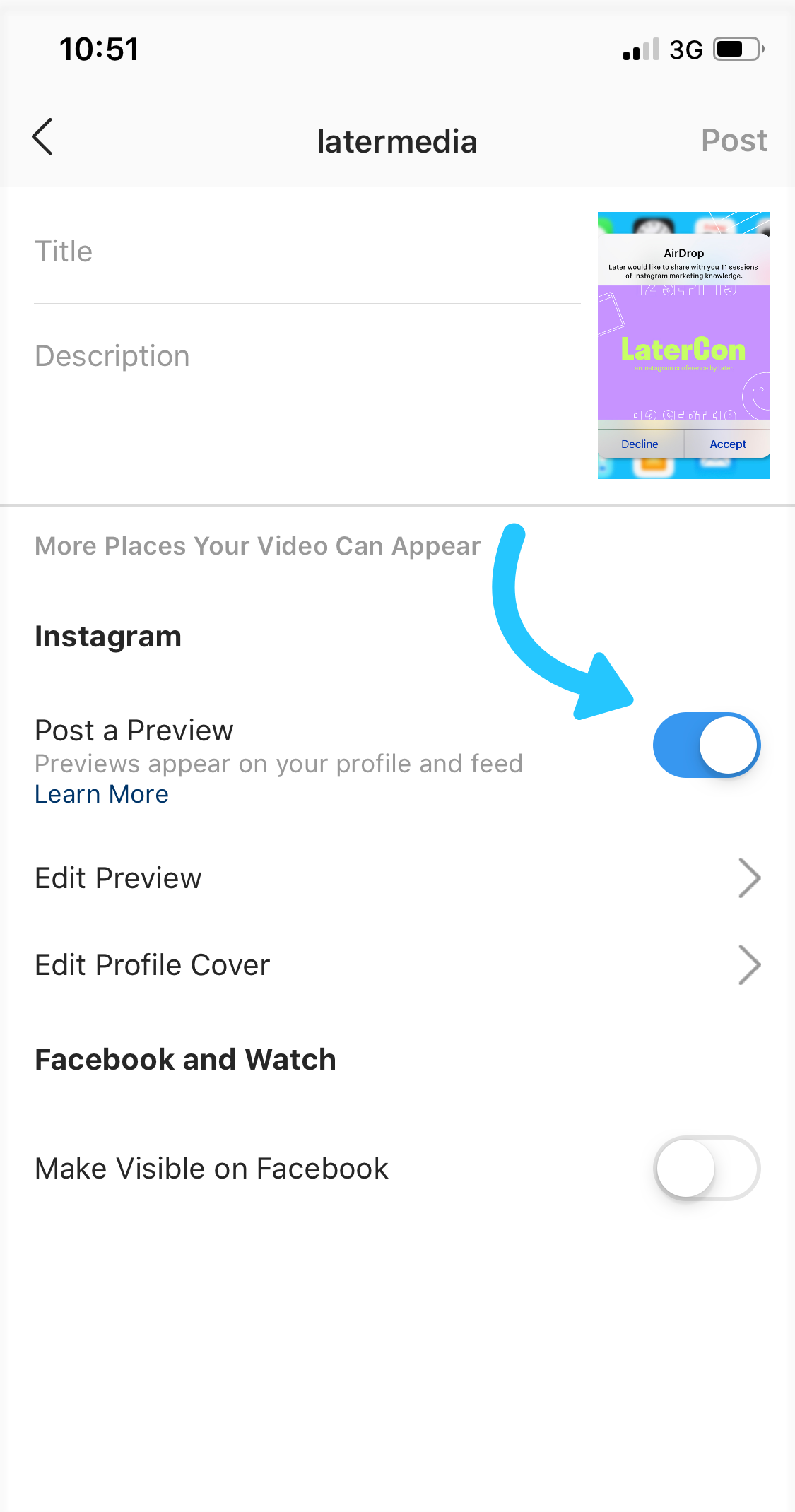
When you post a preview of your IGTV video, the title and description will copy over as the post caption. Just keep in mind that any links you included in your description won’t be “clickable” when viewed in-feed.
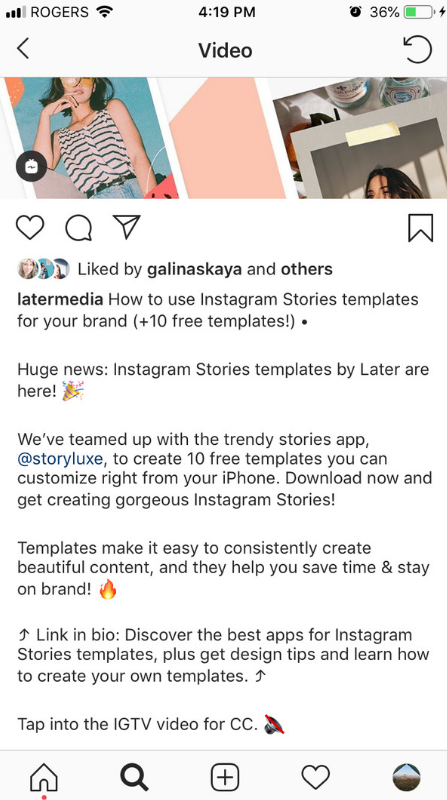
You can also tap “Edit Preview” to adjust how your IGTV video will be previewed in feed (you’ll only have this option if your video is 9:16. If 16:9, your video will show in full).
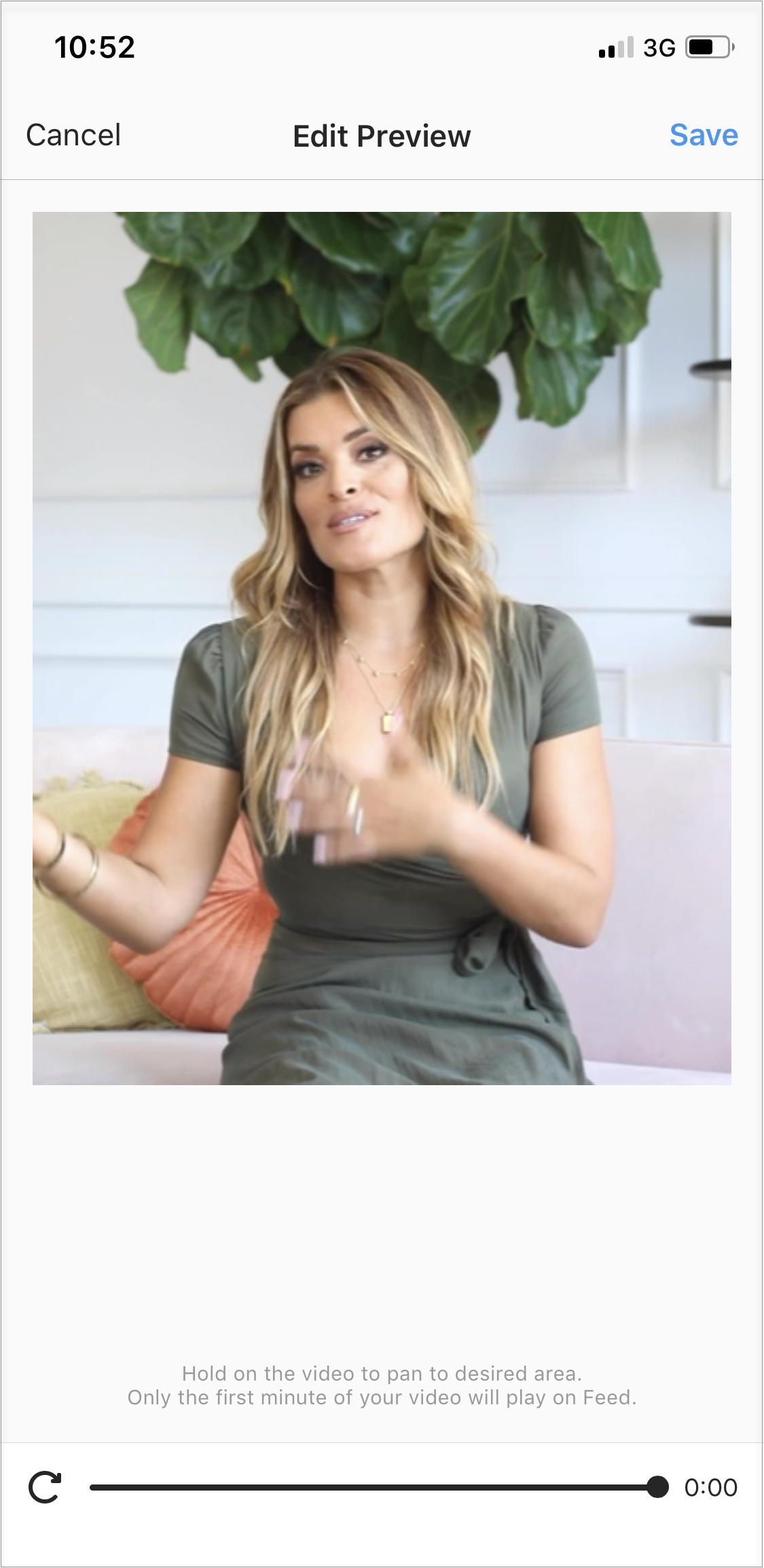
To edit how your IGTV cover image displays in your Instagram feed grid (1:1) select “Edit profile cover” and reposition the image.
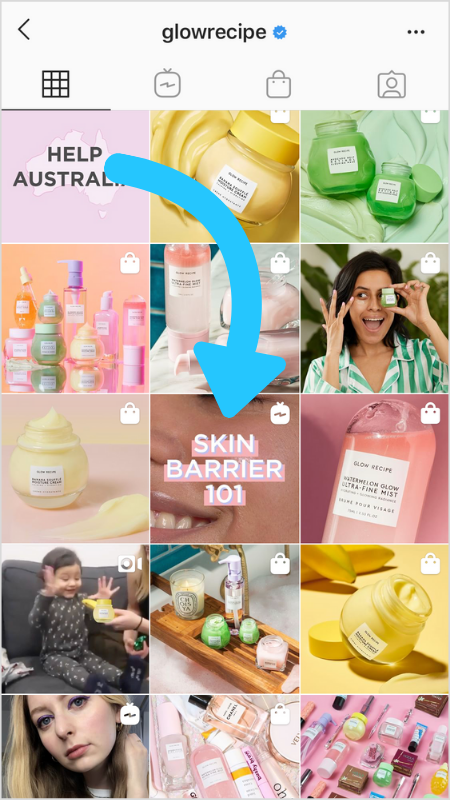
Sharing a preview to your Instagram feed is one of the best ways to increase the reach of your IGTV videos — and with so many editing options and custom cover images, you never have to disrupt your Instagram aesthetic.
How to Schedule an IGTV Video
You can now schedule IGTV videos to automatically post to your feed with the Facebook Creator Studio.
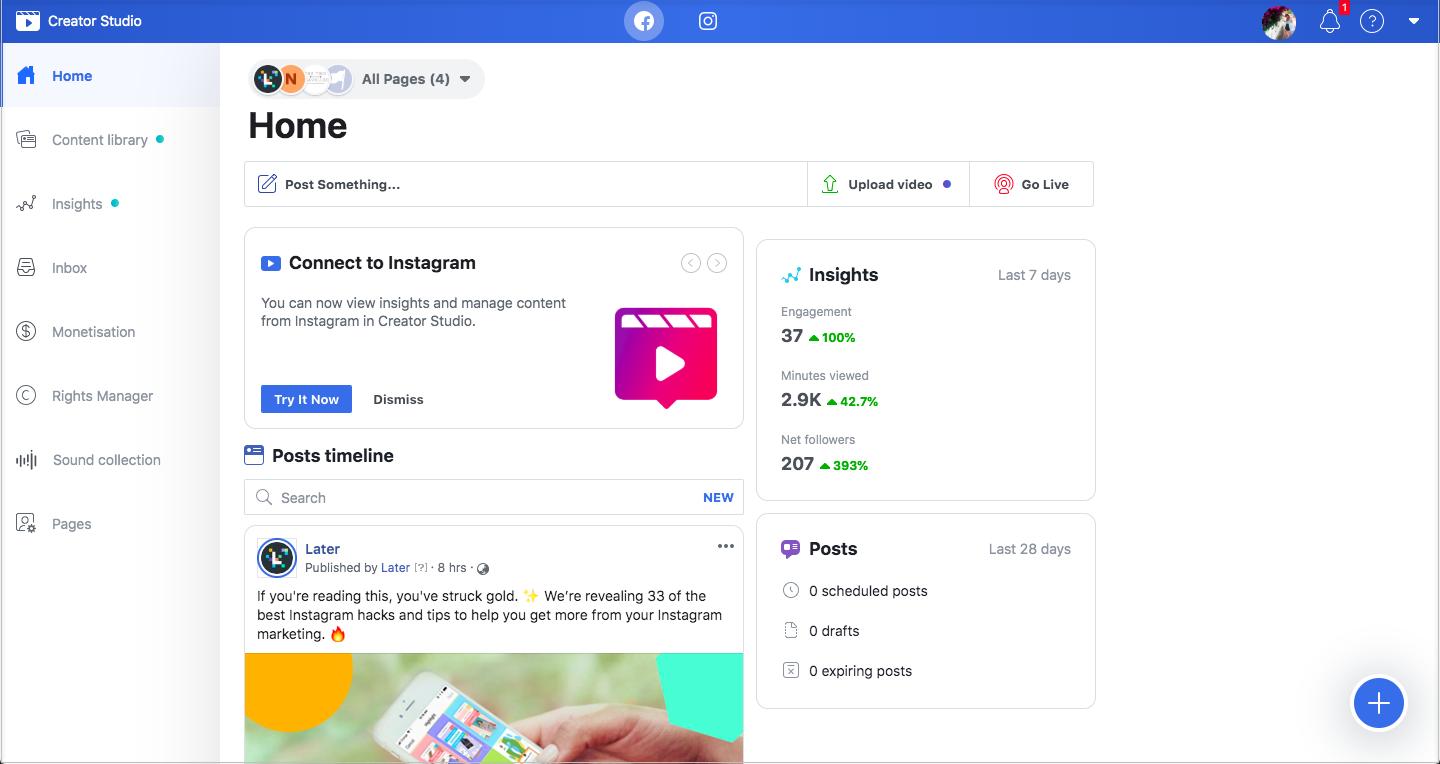
Available on desktop, the Creator Studio allows users to create and schedule posts to IGTV.
Note: IGTV videos are not included in the Instagram API, so no third-party platforms are currently able to schedule or publish IGTV videos. If this does become available, Later will look to implement scheduling for IGTV. For now though, we recommend scheduling your IGTV content through Creator Studio.
If you don’t have a Creator Studio account, you can follow these steps to connect your Facebook account and the Facebook Business Page connected to your Instagram account.
Scheduling your IGTV content is a really great way to ensure you’re always publishing new content and sticking to an achievable content calendar!
Read our step-by-step guide on how to schedule your IGTV content with Creator Studio here.
How to Create a Series
IGTV’s series feature is a big opportunity for brands — if you regularly turn up for you audience and share quality content, you’ll soon start to see your engagement and follower count grow.
But quality content doesn’t have to mean expensive content — in fact, some of the best series out there are filmed in what looks like relatively low-budget settings.
Take a look at Lululemon’s Boob Truths series:
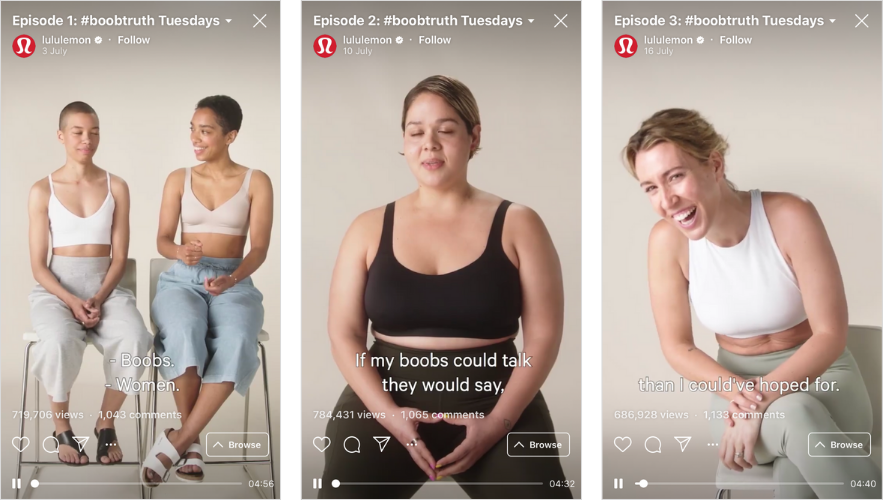
The video series features weekly segments on a single topic (how to find the perfect sports bra fit) and is cohesive in terms of set and format. Just a couple of chairs and a simple backdrop in an easy-to-replicate studio setting.
So if you’re thinking about launching your first series, now’s the time to start strategically planning so you can grow your following.
Here’s how to create a series:
To get started, add a video to your series by tapping “Add to Series”. If it’s your first video in the series, you’ll need to set up a series name and description.

It’s also easy to add existing content to a series! Just select the IGTV tab from your profile, tap on the video you’d like to add, and click “Edit”.
You’ll see a new option labeled “Add to Series”. From here, you can create a new series or select an existing one. To finish, just tap “Post” in the top right corner.
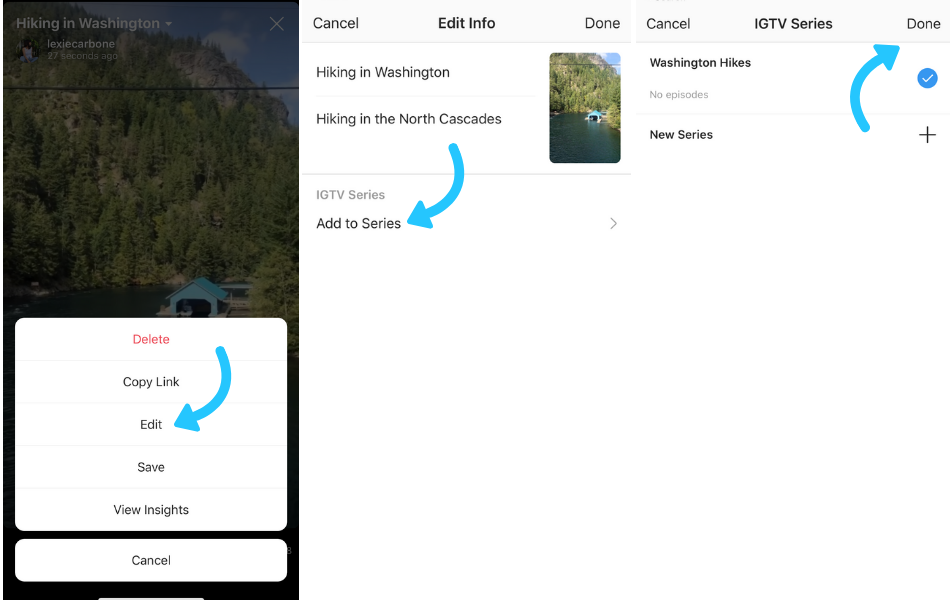
Creating different series is a great way to let viewers know exactly what they can expect from you.
To take full advantage of this trend, Instagram’s Jon Youshaei recommends having a “repeatable theme and style that your audience can expect in every episode.”
When a visitor knows what they can expect from your channel each time you post, they are much more likely to hit that “follow” button and keep tuning in for more.
Discover more top tips for creating engaging, binge-worthy IGTV Series here!
Understanding Analytics
While IGTV’s insights isn’t as detailed as Instagram’s usual analytics, there’s still lots to learn about your video’s performance.
First up, to access your analytics, tap the 3 dots at the bottom of your screen while your video is playing, then tap “View Insights”.
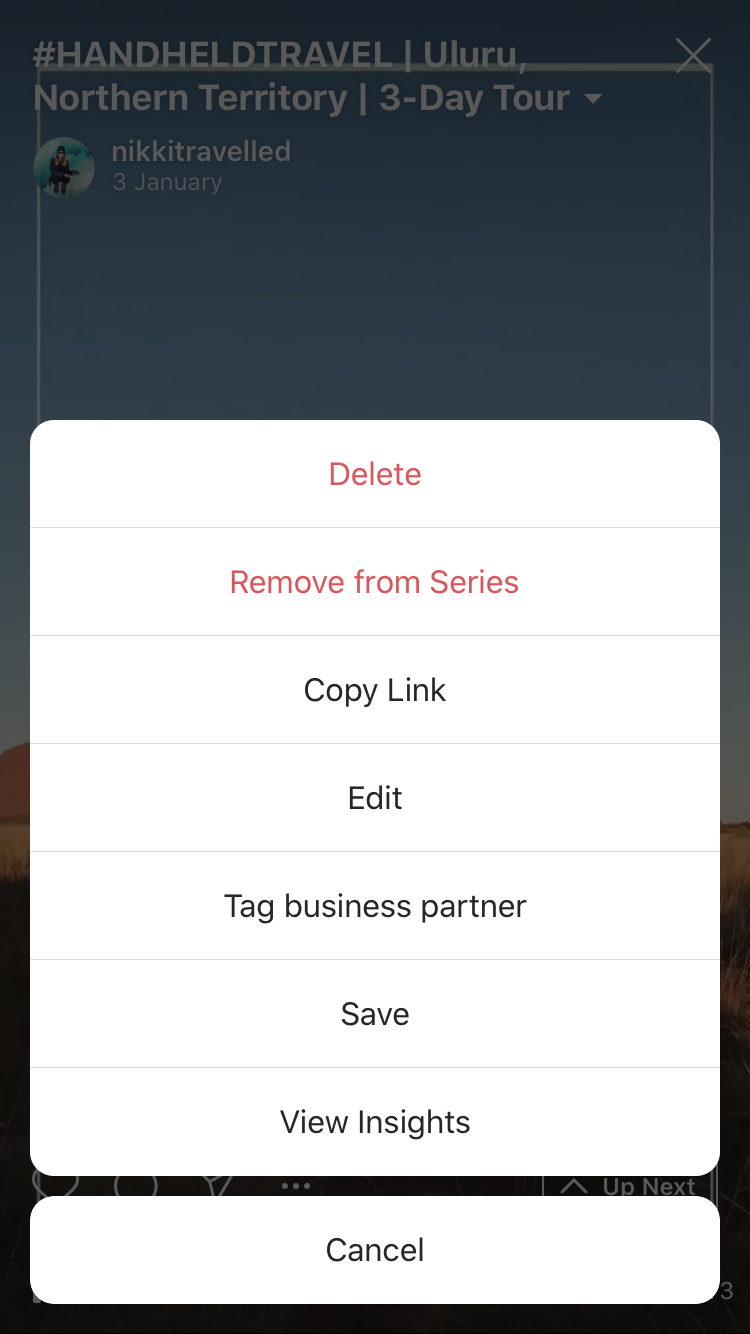
This will open a pop up that will outline your video’s interactions, including views, likes, comments and saves.
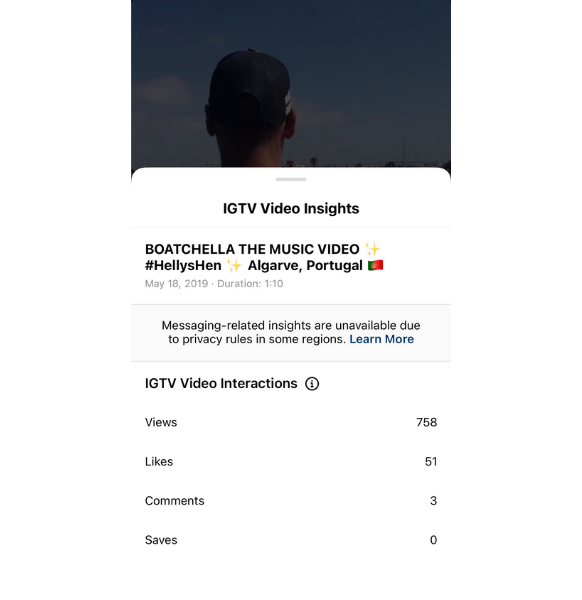
A “view” on IGTV is counted for every time a person watched at least three seconds of your video.
IGTV Insights are great for seeing what works and what doesn’t for your audience. If you need some inspiration, check out our blog post on brands that are killing it with IGTV videos.
IGTV has taken a back seat recently due to Instagram’s huge focus on Instagram Reels.
But with flexible format options, auto-generated captions, and several new ways for brands and creators to make money on the platform, IGTV is definitely a valuable platform to invest in.
If a picture says a thousand words, then video is worth a million.
Long-form video will always be one of the most effective ways to tell stories, share contextual product inspiration, and encourage sales.
Want to stay on top of all the latest trends and feature releases? Subscribe to Later’s email newsletter for all the latest Instagram news, tips, and more!
